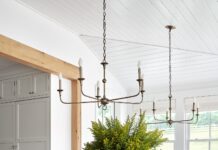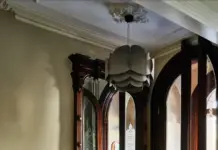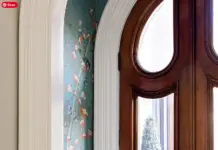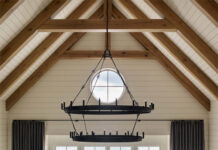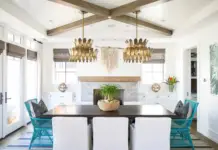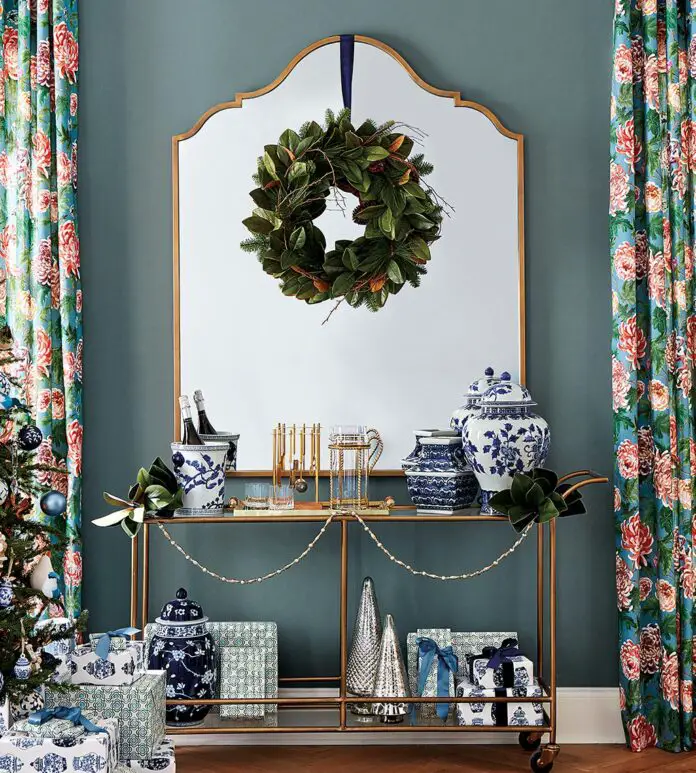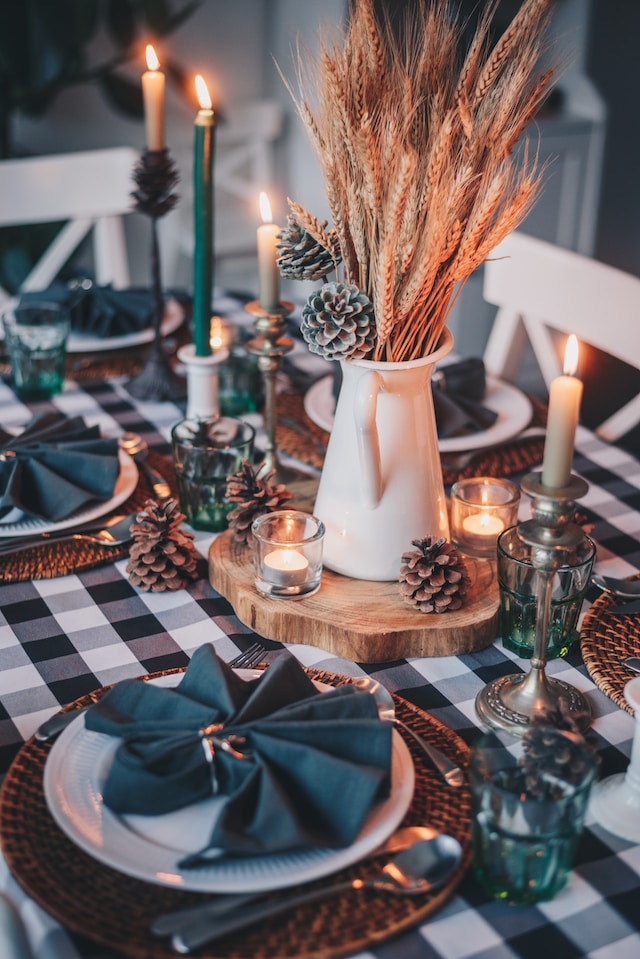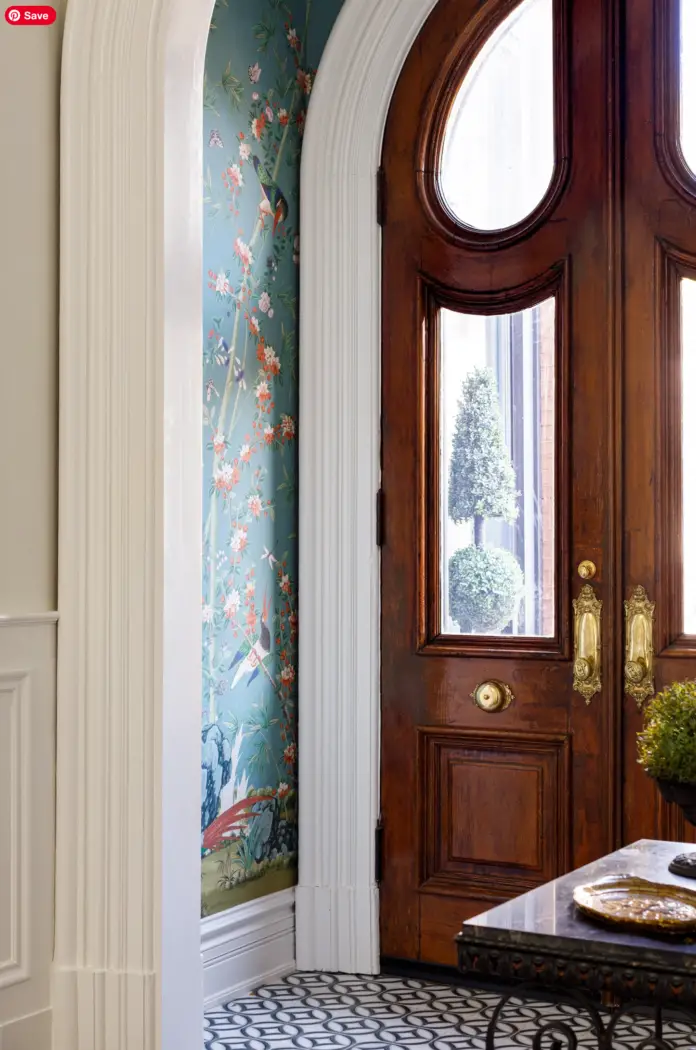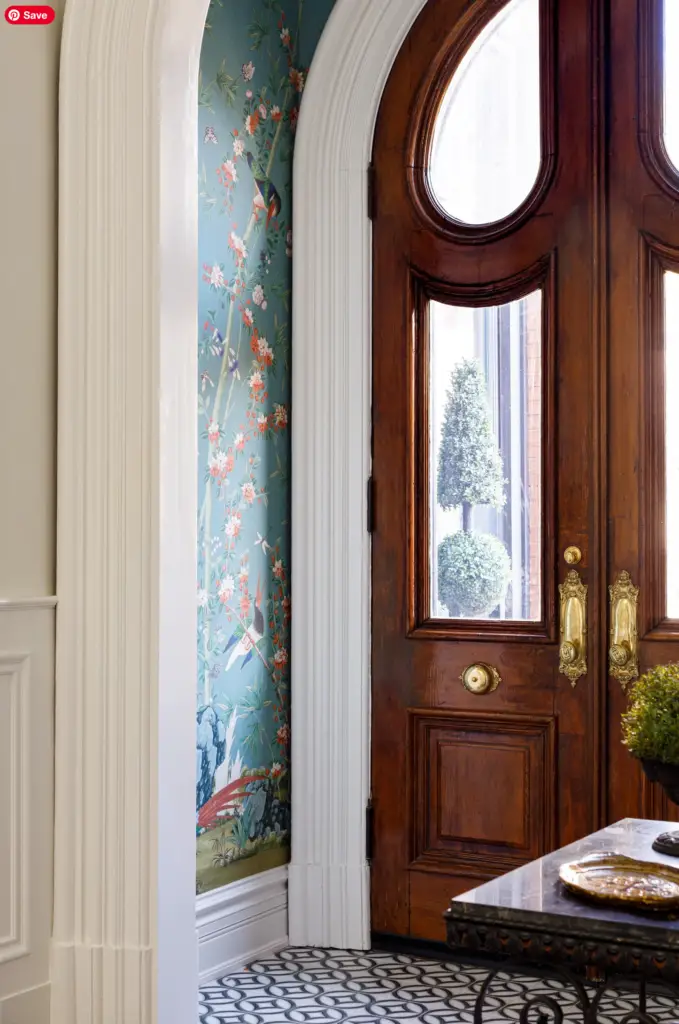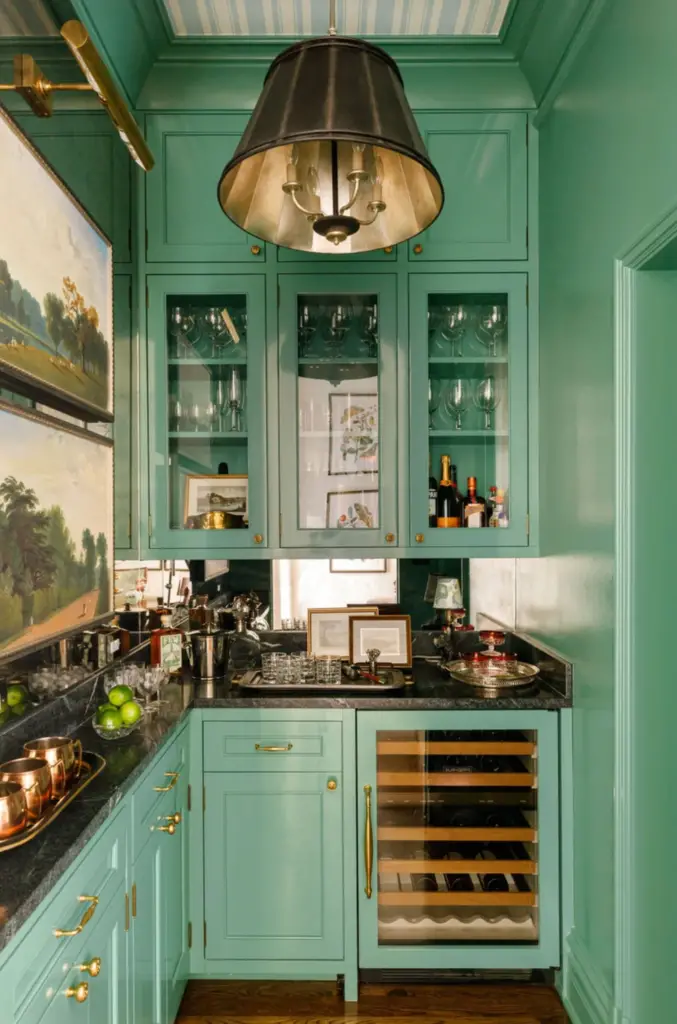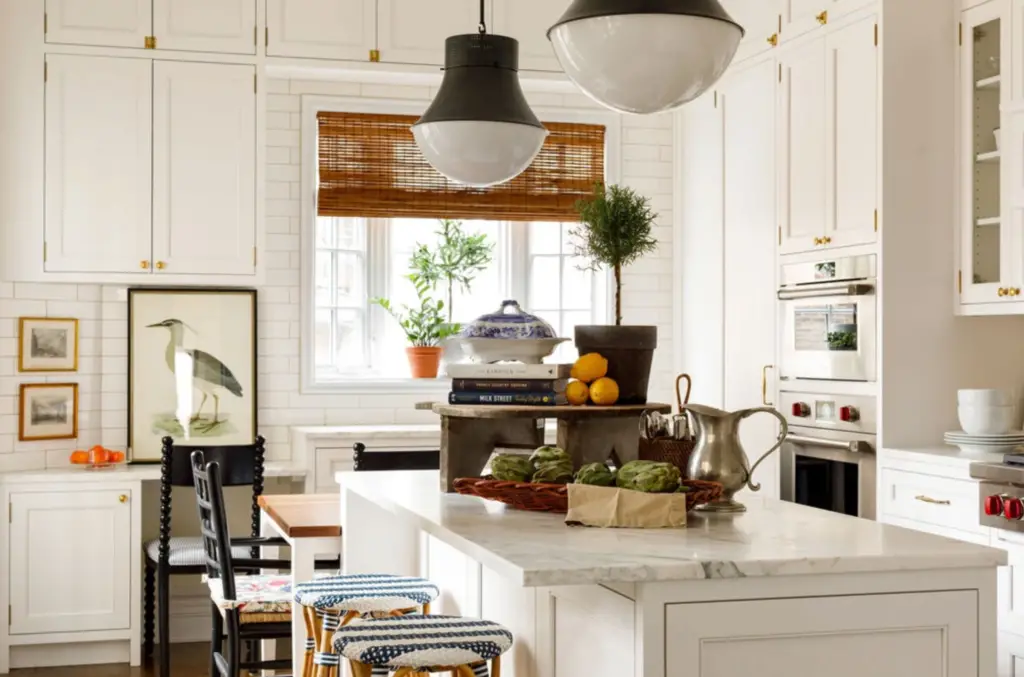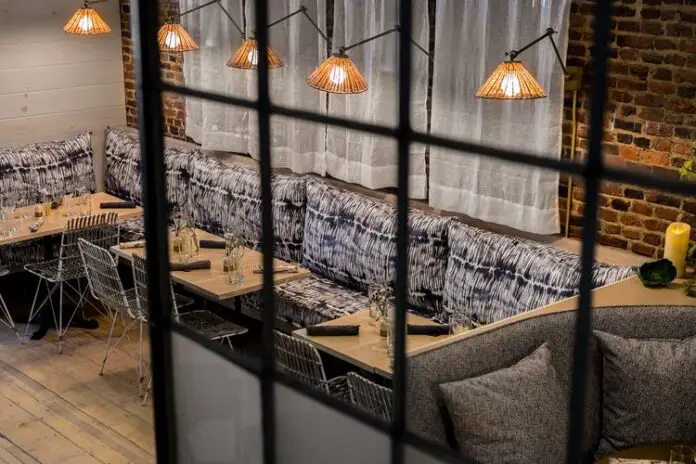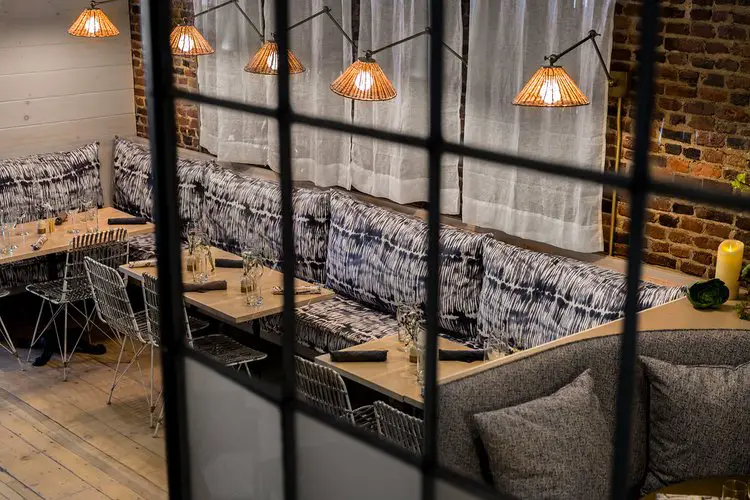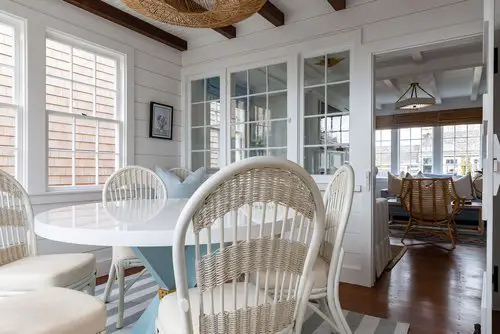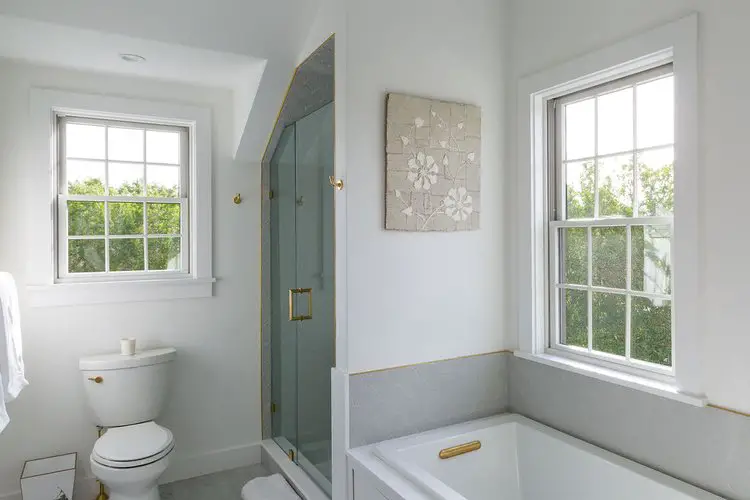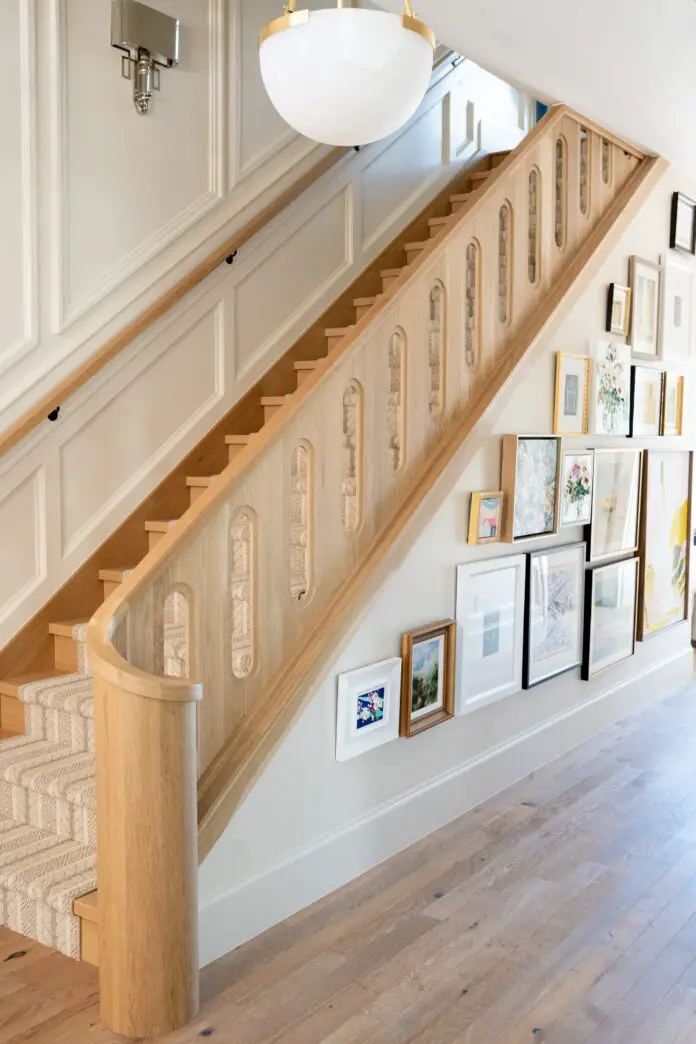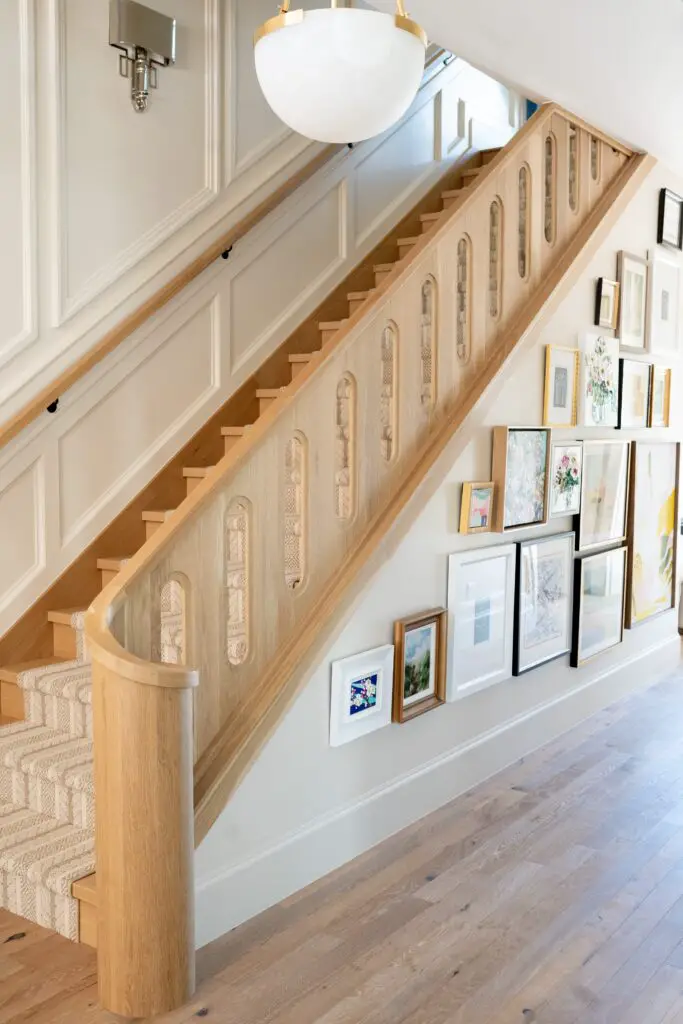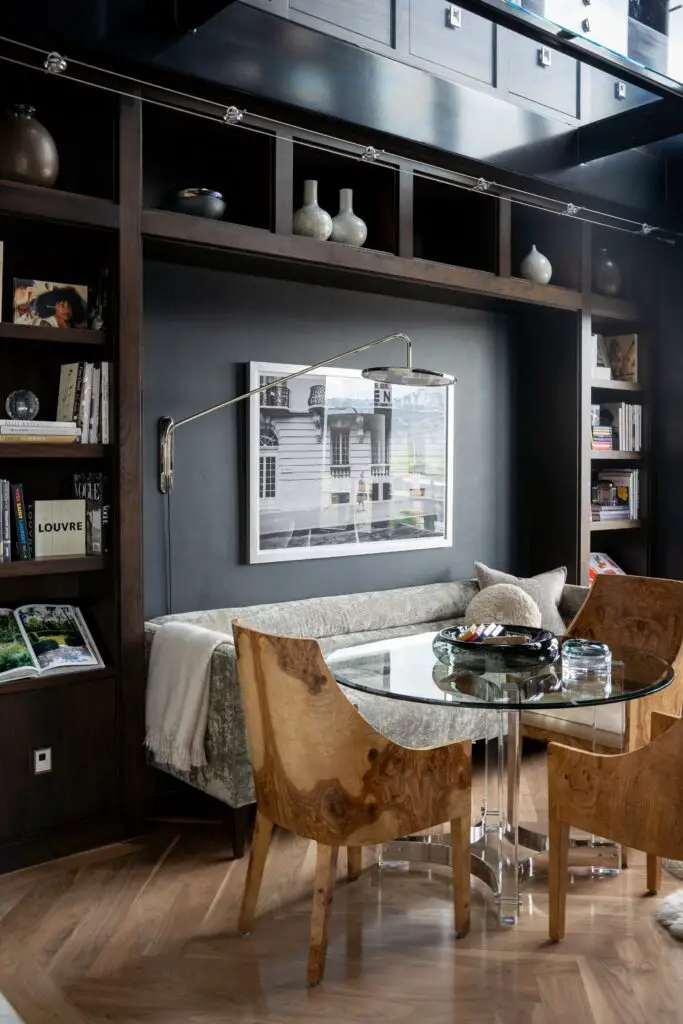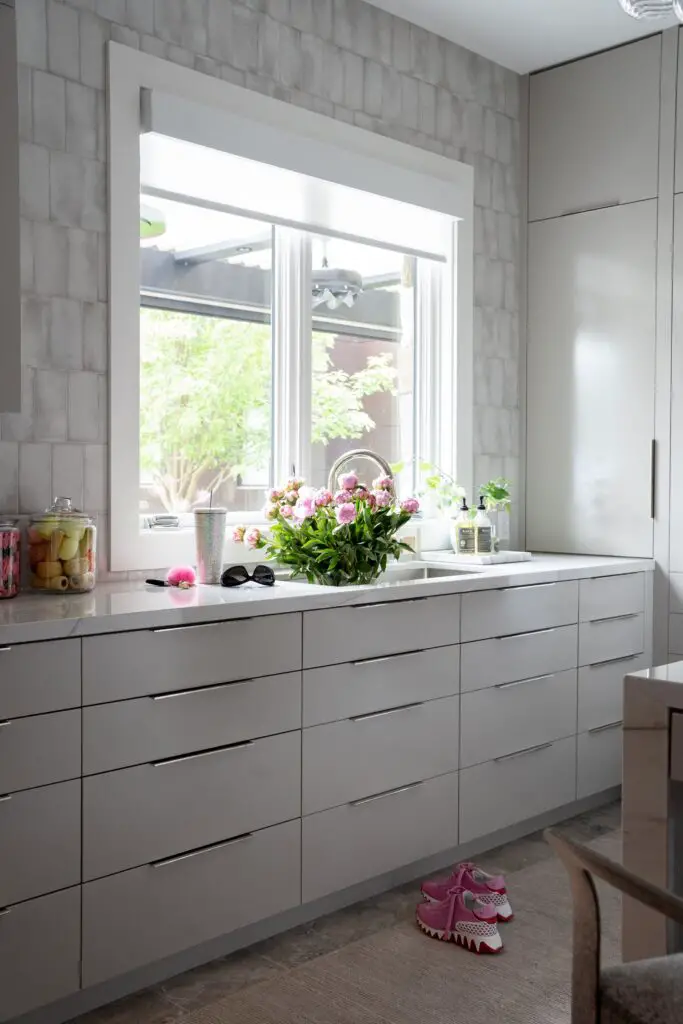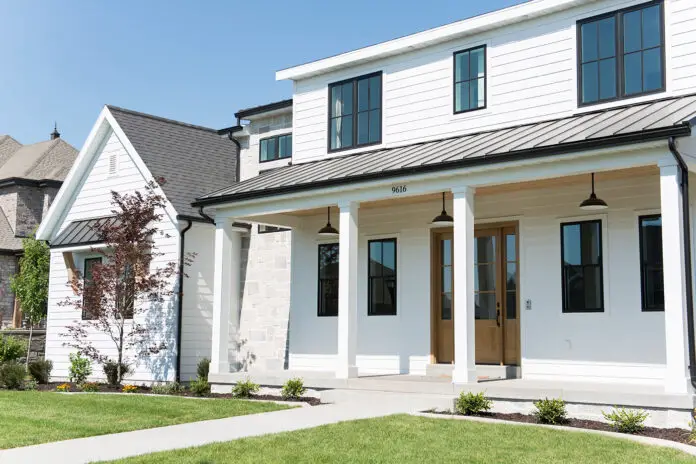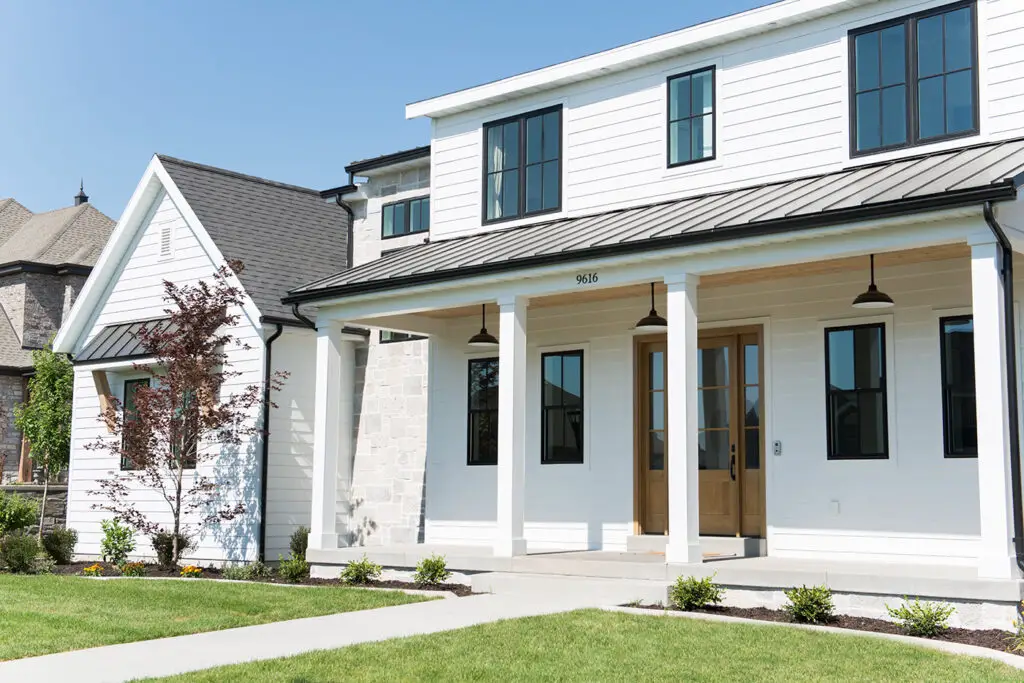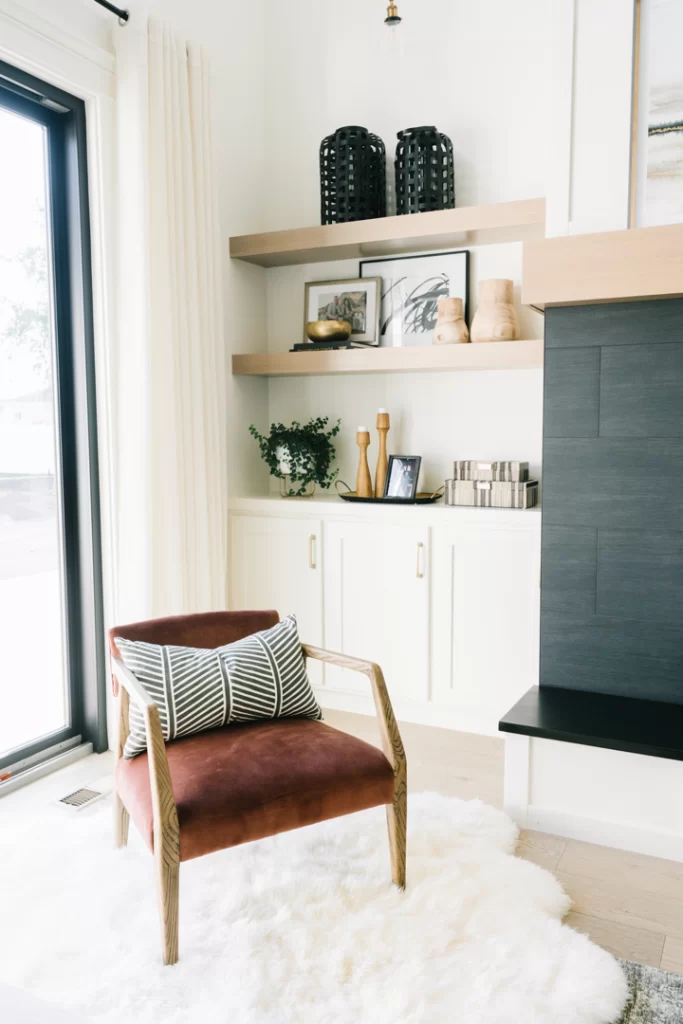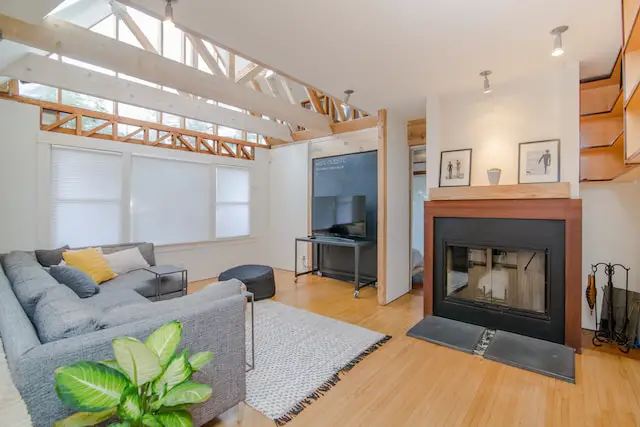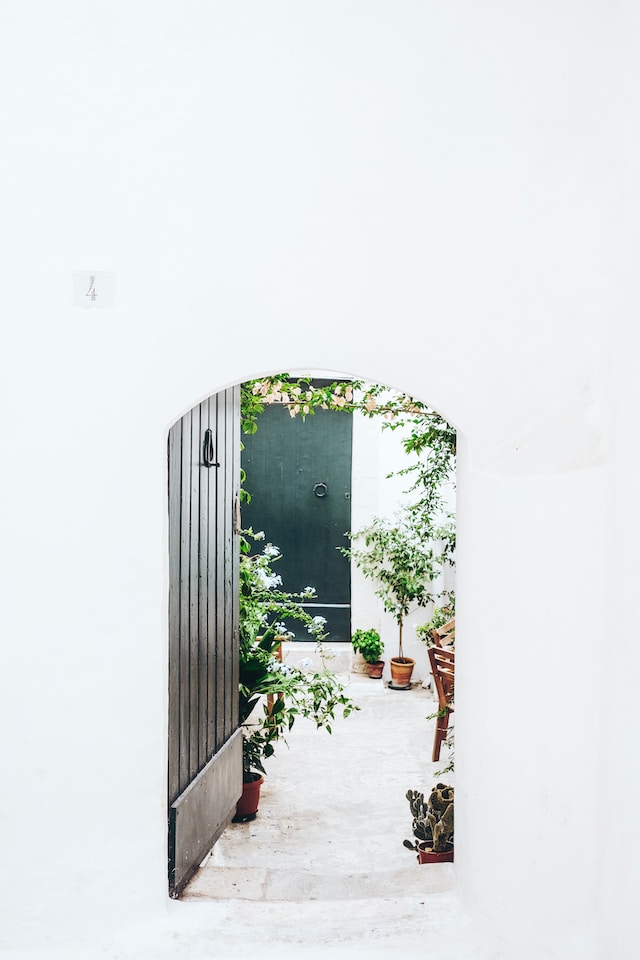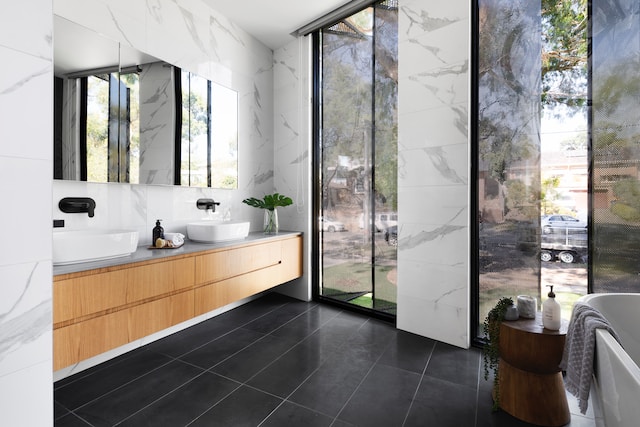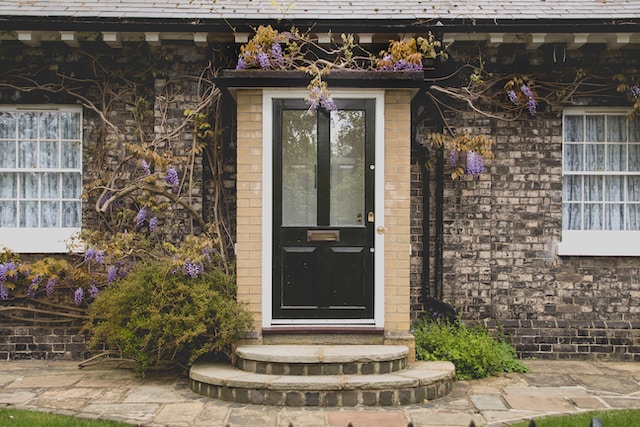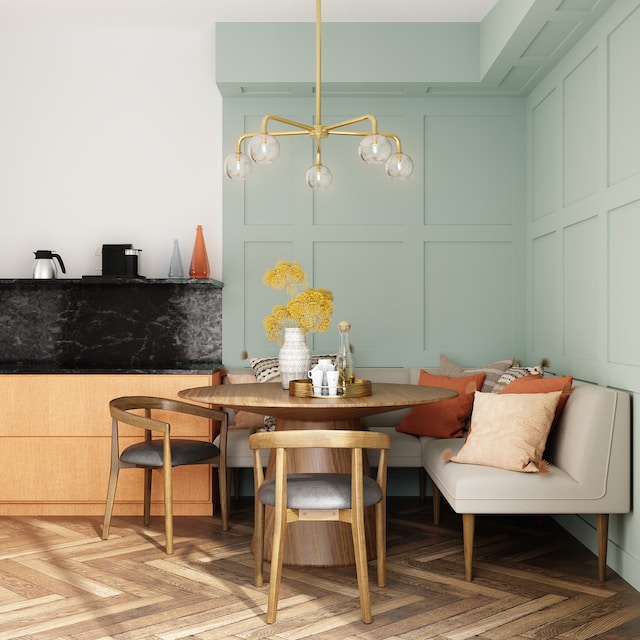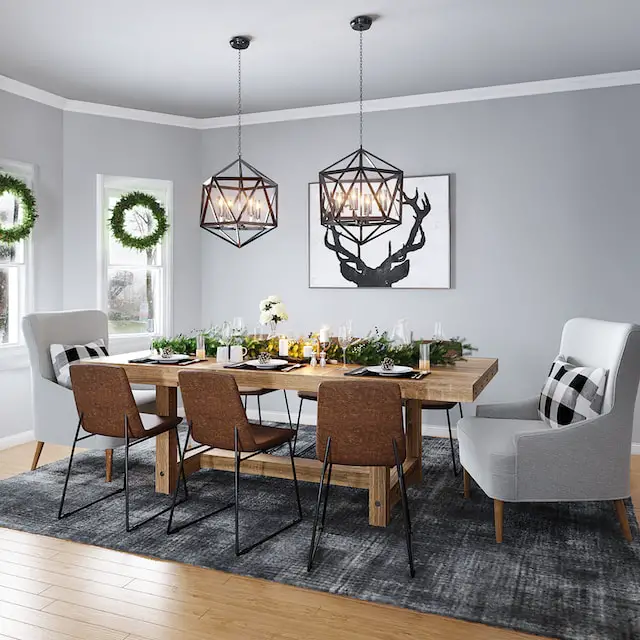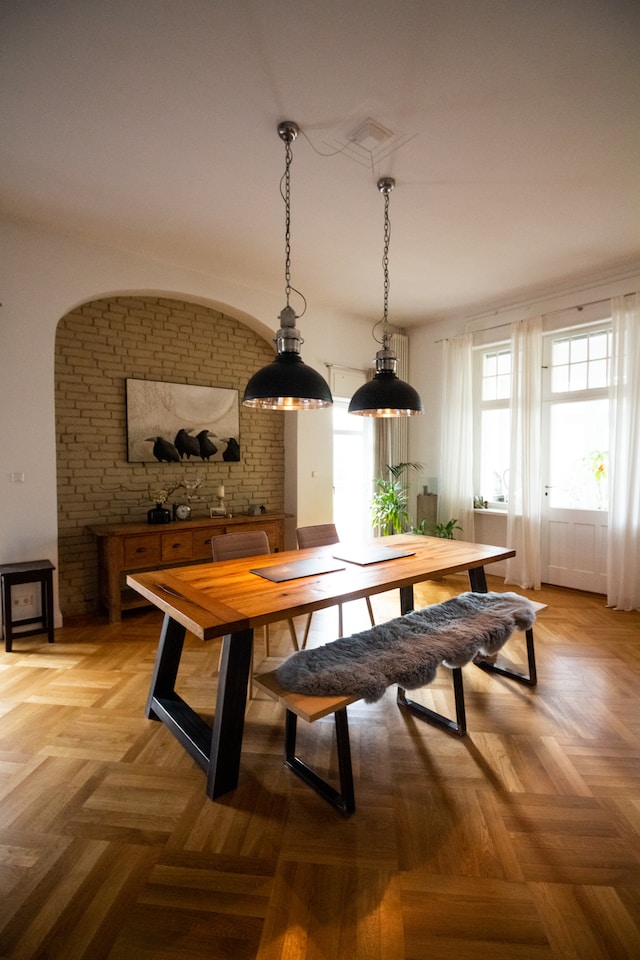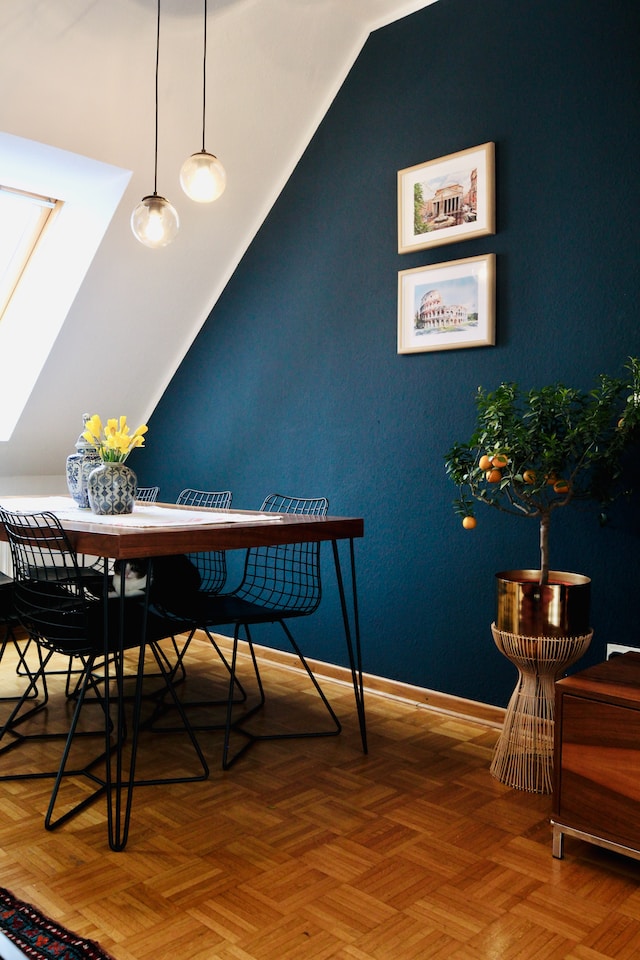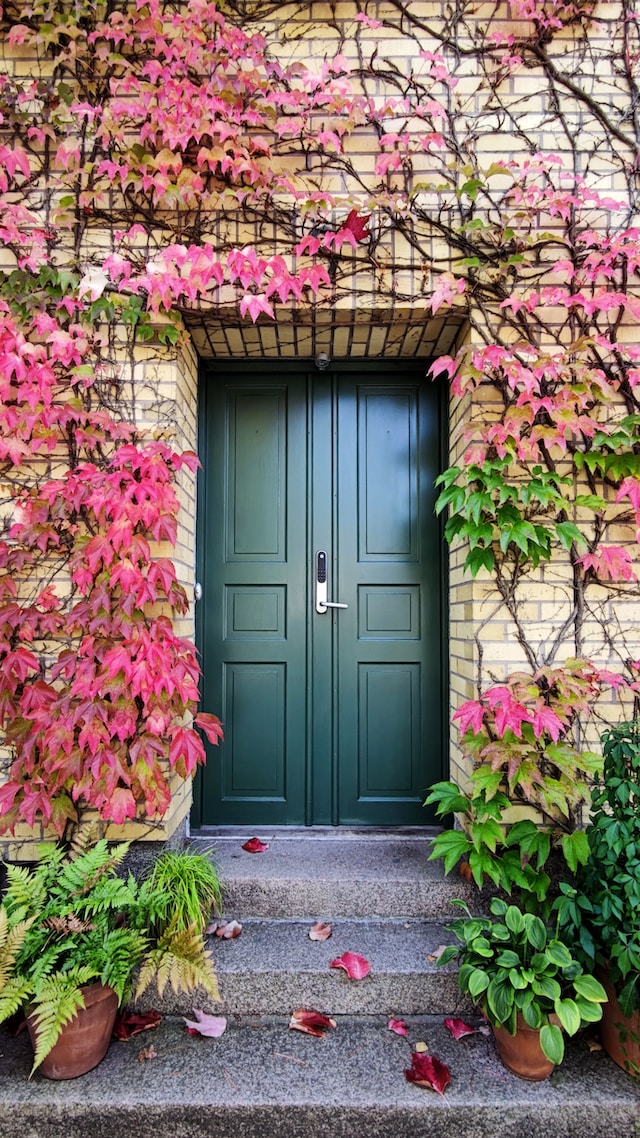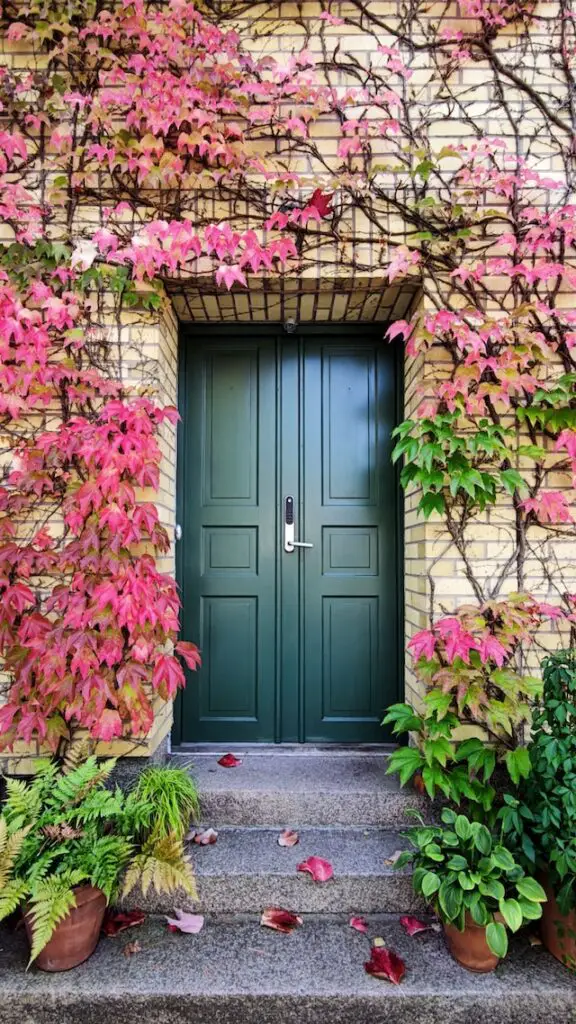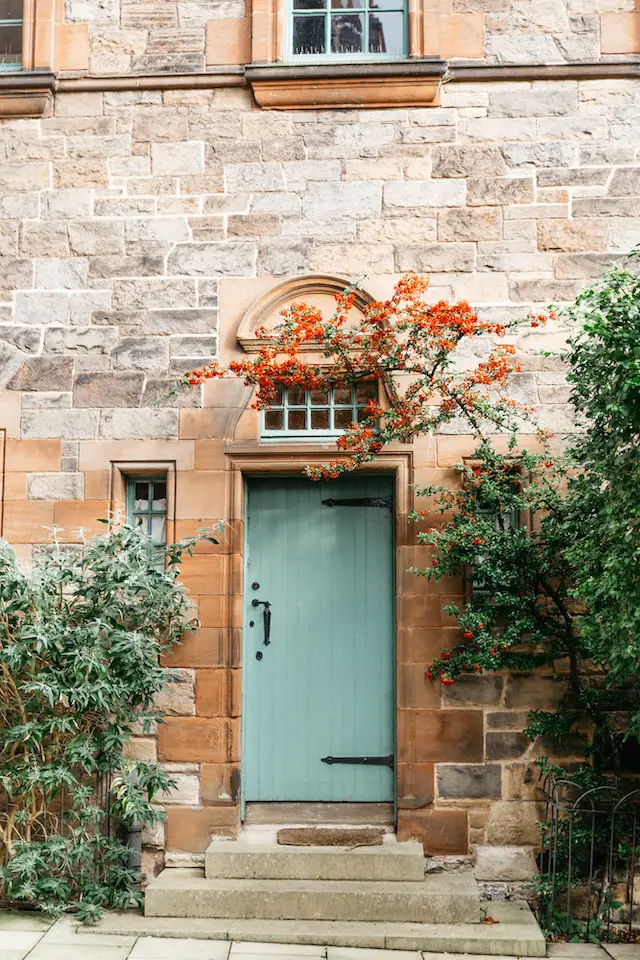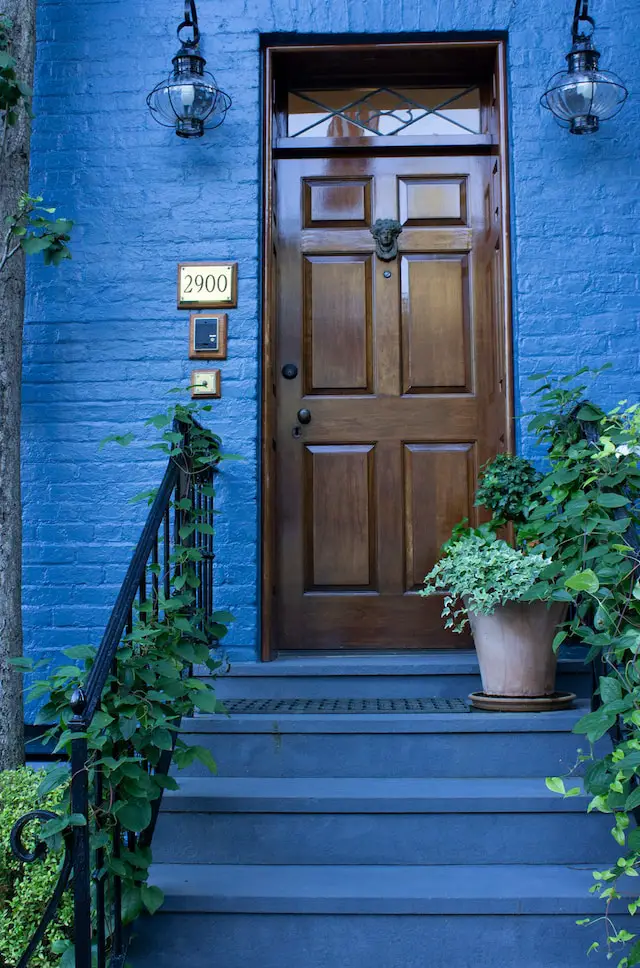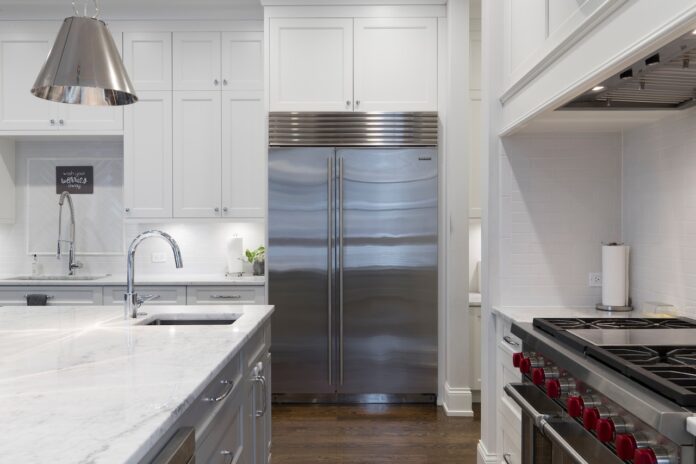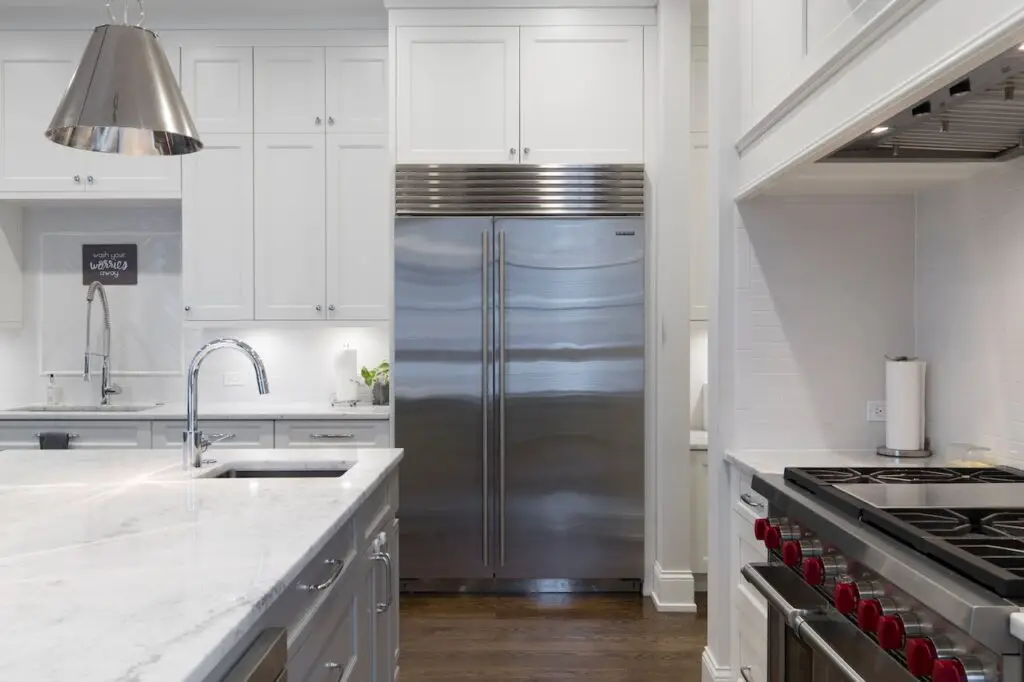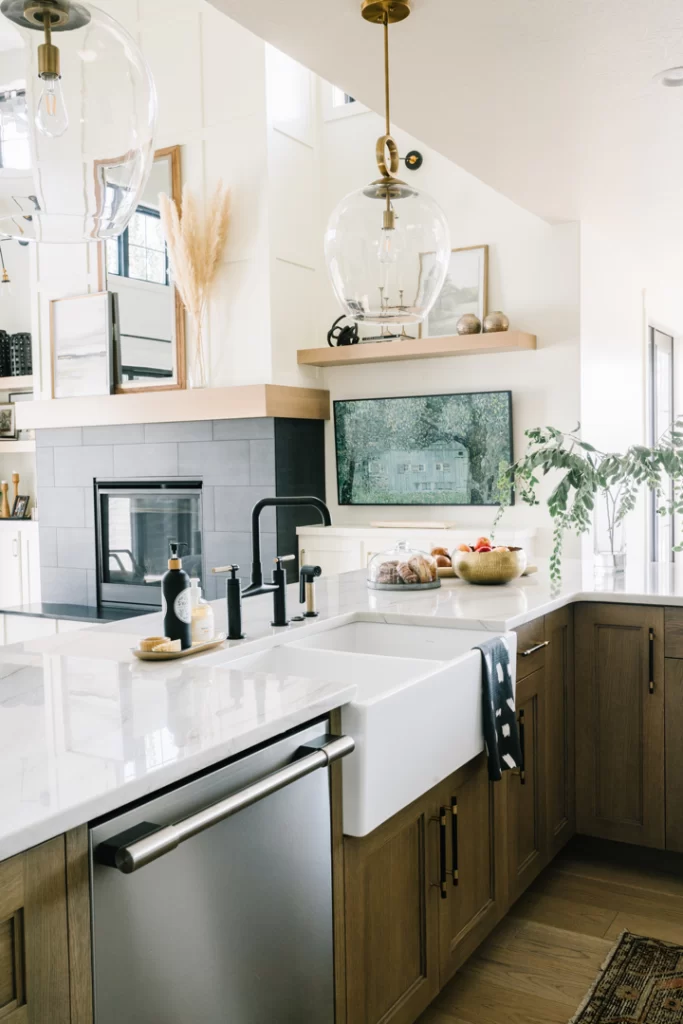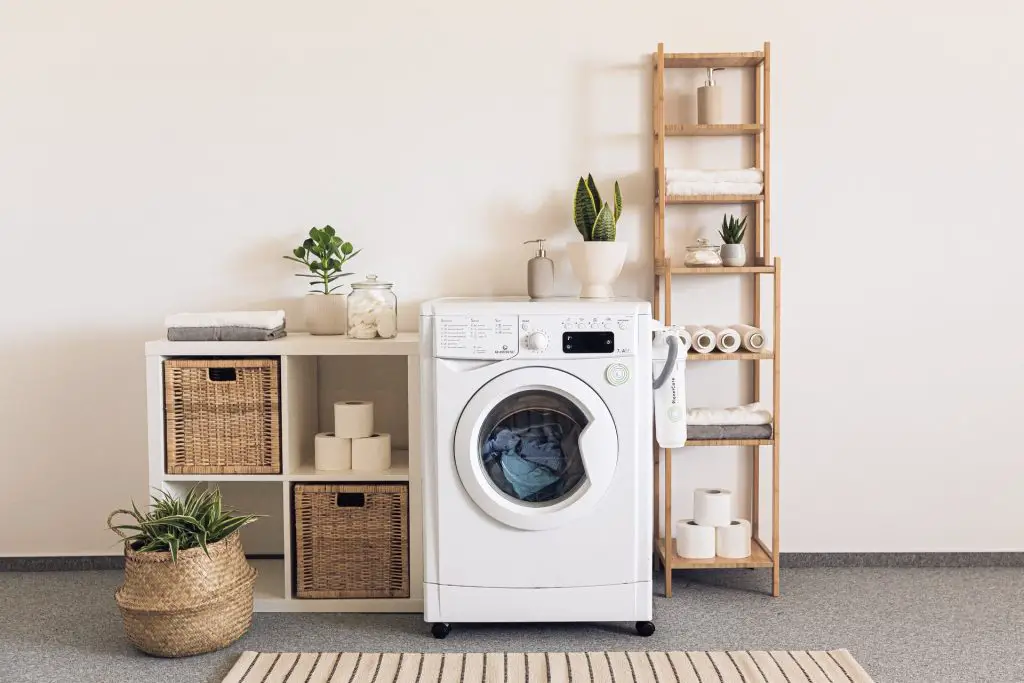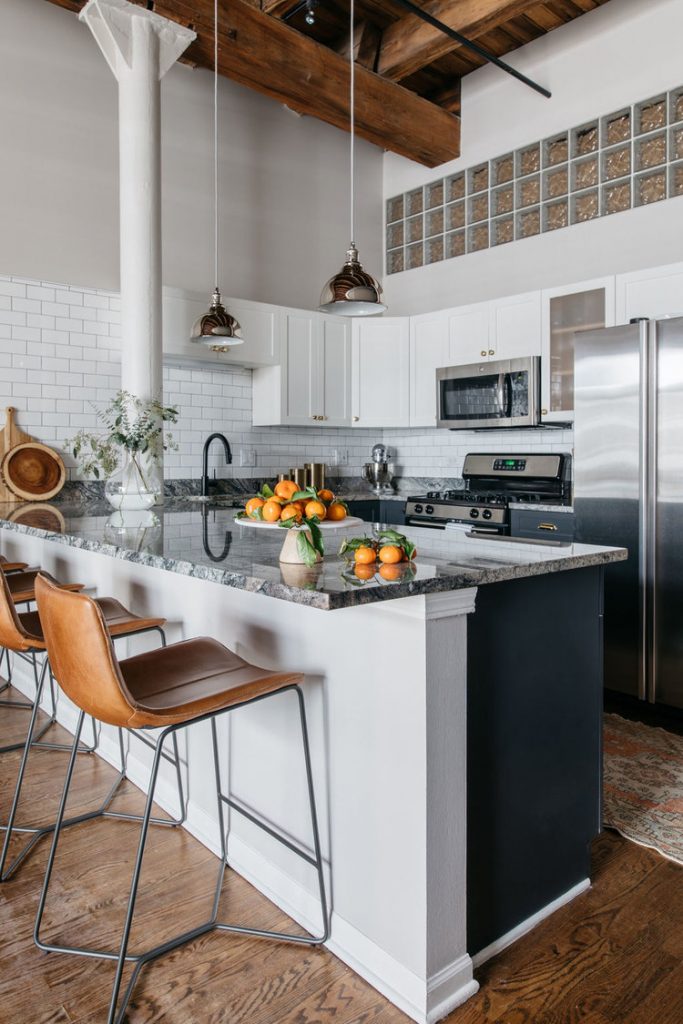There are countless trends and considerations that often influence seasonal color choices in home decor. Ultimately, it comes down to personal preference, but sometimes that spark of inspiration just can’t seem to find you! Hopefully the colors we discuss below and images we’ve found give you some great ideas to light up your home with color this season.
- Traditional Winter Colors:
- Deep Blues: Navy and royal blues are often associated with winter and can create a cozy, sophisticated atmosphere.
- Rich Reds: Deep reds and burgundies can add warmth and a touch of luxury to your space.
- Forest Green: A classic winter color, deep greens evoke a sense of nature and can complement a variety of decor styles.
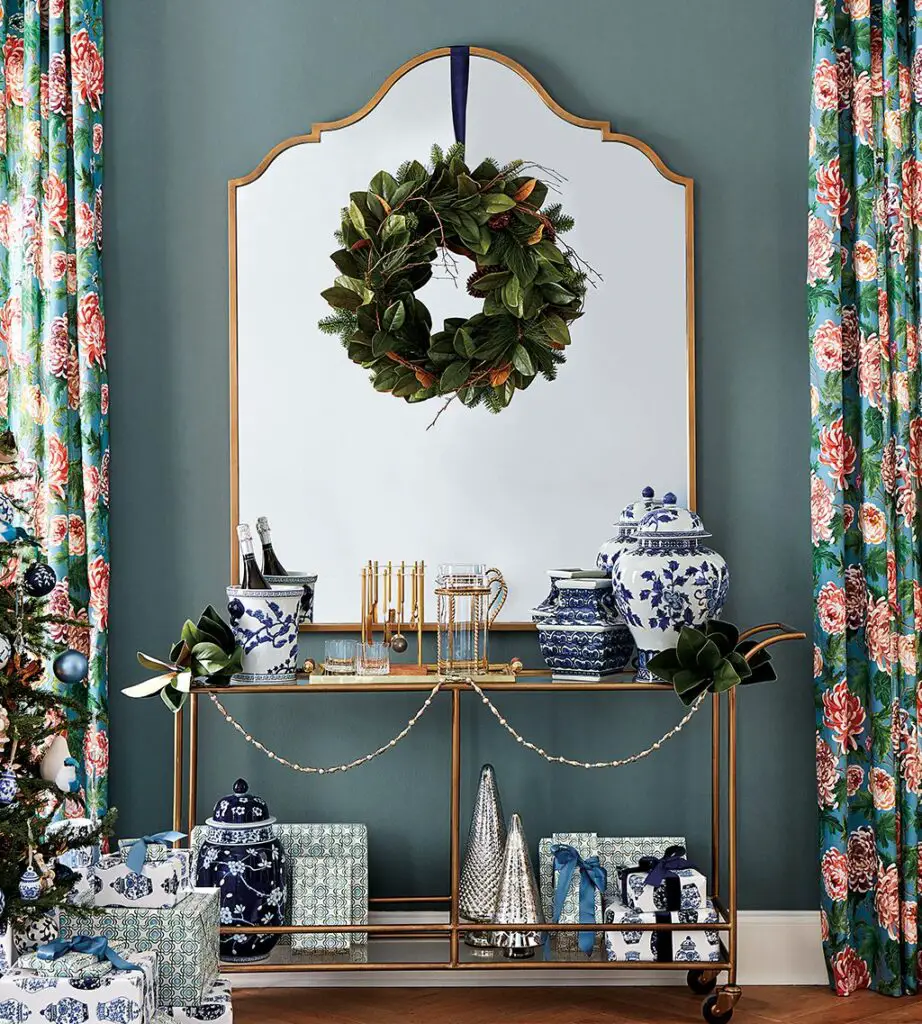
Slate gray with blue undertones is elegant an unexpected for winter. I’m loving it with the green of magnolia leaves! via Ballard Designs
- Neutral Tones:
- Greys: Cool and warm greys are versatile and can serve as a neutral backdrop for other colors.
- Whites: Crisp whites can create a clean and fresh look, while warmer whites can add a touch of coziness.

Crisp whites can never do wrong in our book – and the contrast with the black door and greenery is gorgeous. via Ballard Designs
- Metallic Accents:
- Silver and Gold: Metallics, especially silver and gold, are often incorporated into winter decor to add a touch of glamour and sophistication.
- Natural Elements:
- Earthy Tones: Consider incorporating earthy tones like browns and beiges to create a grounded and natural feel.
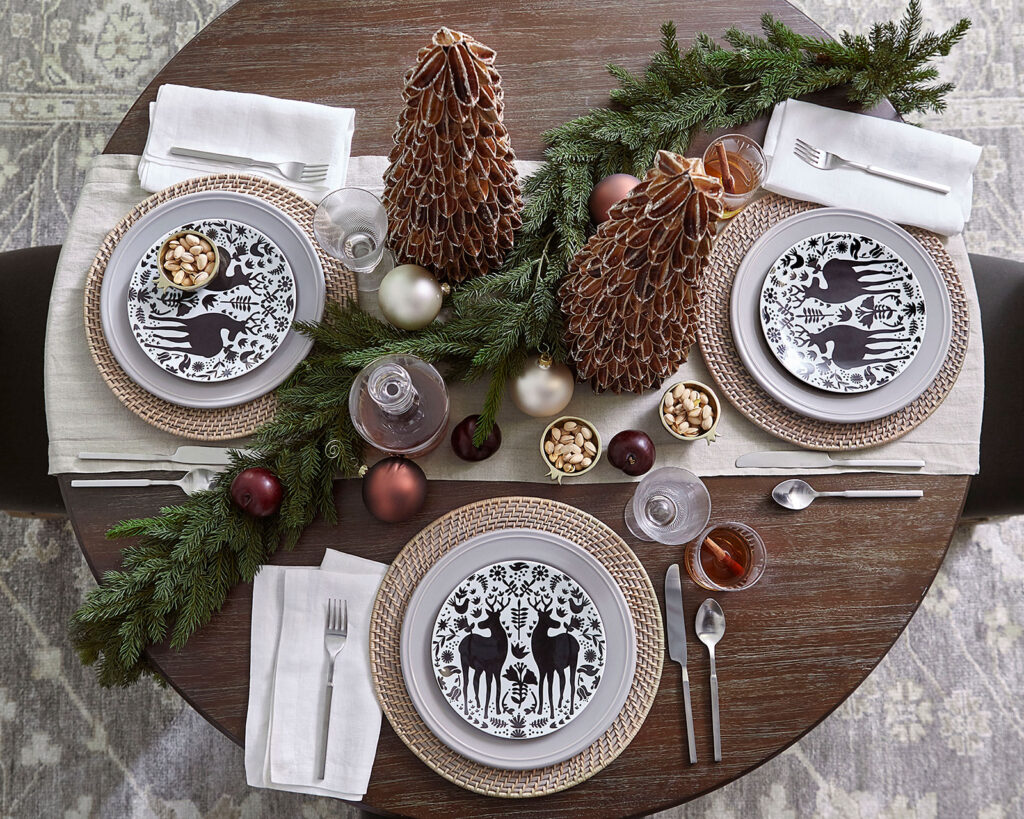
The earthy tones introduced in the pine garland and the seed pod christmas trees, along with the bronze ornaments really promotes a grounded feeling. via Ballard Designs
- Seasonal Accents:
- Icy Blues: Lighter shades of blue, reminiscent of icy winter landscapes, can add a cool and refreshing touch.
- Sparkling Whites: Incorporating whites with metallic or glitter accents can bring a festive and wintery feel.






